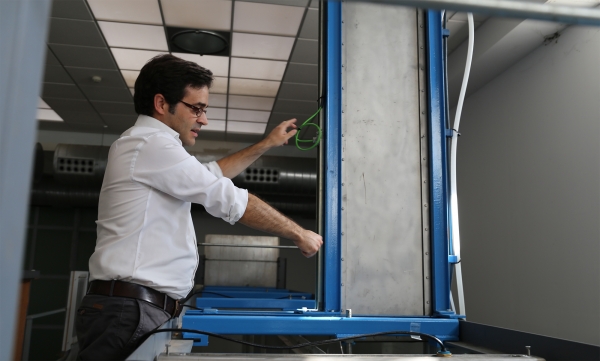River dikes are small dams made of earth that are used to hold in the water of the course of a river, without affecting the course too much. However, when the water exceeds a certain level due to flooding, the dike breaks, causing disasters that can be devastating for human life or cause huge financial losses.
Providing a solution to this issue and improving the lives of those who live near riverbanks are also the work of Hydraulics. Hence, Hydraulic Engineering Professor Óscar Castro Orgaz, from the Agronomy Department at the University of Cordoba along with a team of international researchers, developed a system of physics equations that models how when water spills out over an earth dike, the dike breaks, causing consequent overflow of the course of the river.
They are not the first to do so. This kind of research has been happening for some time now in the field of river hydraulics, but most predictive models that have been developed to date assume the dike is always stationary and that water flowing by simply erodes its surface continuously. This does not always occur. And that is the variable that the University of Cordoba incorporated. This new model takes into account the deformation that the bed of earth undergoes (of which the dike is comprised) while water spills out over and erodes it.
In order to predict under what conditions and how the dike will break, and therefore rely on the tools needed to anticipate and face this problem, the researchers used a hybrid analysis based on physics equations solved by a mathematical model, and at the same time, performed a series of laboratory experiments to verify whether the equations and the model gave results that were consistent with reality.
A reduced scale dike replica made it possible to test the model in order to verify it. The tests on this model enabled the analysis of the model’s predictive capacity, using variables like speed, pressure, water levels and friction with the dike. In addition, the properties of the materials the dike is made up of were taken into account.
This work is a step further in the study of river hydraulics carried out within the VÁMONOS (CTM-2017-85171-C2-1-R) State Research Plan Project in which different issues in river dynamics are analyzed, such as obstacles that hinder the course of rivers.
Cantero-Chinchilla, F., Castro-Orgaz, O. y Dey, S. (2019): Prediction of Overtopping Dike Failure: Sediment Transport and Dynamic Granular Bed Deformation Model. Journal of Hydraulic Engineering. 145. 10.1061/(ASCE)HY.1943-7900.0001608.


